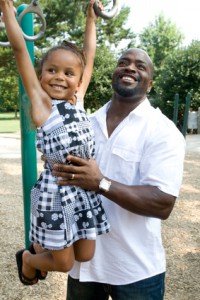Want Your Child to Listen Better? Then Play!
Children don’t always listen the way we’d like. Who are we kidding? Adults don’t always listen the way we’d like either. In fact, I don’t always listen as attentively as I know I should. Come to think of it, if children learn to listen by following our examples, it’s no wonder they don’t listen the way we’d like. Sorry, I digress. I just want to share an activity you can utilize to help your children listen better. This activity also gives us, as parents, the experience of listening deeply to our children. What is the activity? Play.
Yes, playing with our children will help them listen better. Not just any type of play activity though. I’m talking about imaginative play activities like drawing, dolls, building, or dress up.
And not just play with anyone, but with you—their parent. This is an opportunity for you to enjoy time with your child and learn about them. Children become close to those who engage in activities with them. This becomes an opportunity for you to deepen your relationship with your child. A deeper relationship will contribute to their ability to listen to you in the future.
And not just any type of play will do for this activity. No, for this activity engage your child in child-directed play, play in which you follow their lead. They become the leader and you follow. They determine the direction and course of the play. As a parent engaged in this type of play, avoid giving directions, ideas, or suggestions. Simply follow their lead.
Researchers have developed the acronym P.R.I.D.E. to help parents know how to respond to their child while engaging in child-directed play. The “P” in PRIDE stands for “Praising” your child. I prefer to say, “Acknowledge what your child is doing.” Acknowledge specific things about your child’s speech, actions, or work rather than global aspects. For example, “I love the bright colors you dress Barbie in” or “That is a tall tower” rather than simply “How pretty,” “You’re good with fashions,” or “Good job.” Specific acknowledgements (praise) prove more effective than global acknowledgement. Also, acknowledge behaviors you want to encourage in your child. For example, “Thank you for letting me take a turn” or “You asked so politely, thank you.”
The “R” in PRIDE reminds us to reflect verbally on our children’s description of the play. For instance, if your child says, “The tower falls down” as they knock it over, you might reflect by saying, “Ahhh. The tower falls with a crash.”
The “I” in PRIDE prompts us to imitate our children’s play. Imitate them by engaging in parallel play or by following their directive on how to interact. If they dress a doll, you can dress another doll (parallel play). If their doll interacts with your doll, reciprocate (interact). If they build with Legos, you build with Legos (parallel play). If they say, “I need green ones,” hand them some green Legos (interact). Engage in parallel play and follow their directives on how to interact.
The “D” in PRIDE advises us to describe what our children are doing. Act like a sportscaster and narrate your child’s play. “Barbie is putting on a pretty blue dress.” “You just put a red Lego on that tall tower.” “You are standing tall as the king of your kingdom.” Simply describing your child’s actions informs them that you arere engaged in their play and interest in them…that you are “listening” to them deeply.
The “E” in PRIDE stands for enthusiasm. Engage your child in this child-directed play with your full attention and with an appropriate level of energy. You don’t need to go overboard with a level of energetic enthusiasm that overwhelms your child. Simply responding with “Wow, those are lovely colors” communicates your interest in them and their world. A simple smile or a high five can fill a child with joy. The main goal is to show your child, through your words and actions, that you are genuinely and authentically interested in them and happy to interact with them. In other words, they are valuable to you.
The good news is that research has shown this type of play strengthens the parent-child relationship. And a stronger relationship leads to better listening. Research also suggests that this type of play increases a child’s attention span and social skills. I believe it also teaches us, as parents, how to listen deeply to our children…and children who feel heard listen better, especially to those they feel listen to them.
Now for the fun part. Grab your child and model how well you can listen by engaging them in child-directed play. You’ll enjoy the play and the relationship you gain as a result.

-0 Comment-